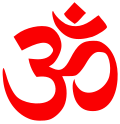This article has multiple issues. Please help improve it or discuss these issues on the talk page . (Learn how and when to remove these messages)
|
Srila Uddharana Dutta Thakura | |
|---|---|
 Statue of Uddharana Dutta at Uddharanpur | |
| Personal life | |
| Born | Dibakara Dutta c. 27 August 1481 |
| Died | c. November 25, 1541 (aged 60) Krishna Troyodoshi 1541 AD, or Krishna Troyodoshi 1463 Saka Year |
| Resting place | Vrindavan, India |
| Nationality | Indian |
| Spouse | Suprasanna Devi Sister of Haladhar Sen |
| Children | Priyankar Dutta Later named Srinivas Dutta Thakur |
| Parents |
|
| Known for | Codifying Gaudiya Vaishnavism |
| Relatives | Umapati Dhara, Haladhar Sen, Gouri Sen |
| Honors | Dwadasha gopas, the 12 cowherd-boy associates from Goloka Vrindavan who were always in the company of Krishna and Balaram. |
| Religious life | |
| Religion | Hinduism |
| Denomination | Vaishnavism |
| Philosophy | Achintya Bheda Abheda |
| Lineage | Brahma-Madhva-Gaudiya |
| Sect | Gaudiya Vaishnavism |
| Religious career | |
| Guru | Nityananda |
| Based in | Vrindavan, India |
| Part of a series on |
| Vaishnavism |
|---|
 |
| Part of a series on | |
| Hindu philosophy | |
|---|---|
 | |
| Orthodox | |
| Heterodox | |
Uddharan Dutta Thakur (উদ্ধারণ দত্ত ঠাকুর) (c. 1481 – c. 1541) was an Indian philosopher and saint from the Gaudiya Vaishnava school of Vedanta tradition, producing a great number of philosophical works on the theology and practice of Bhakti yoga, Vaishnava Vedanta and associated disciplines. [1] He is known as one of the Dwadasha gopas, (the 12 cowherd-boy associates from Goloka Vrindavan who were always in the company of Krishna and Balaram). [2] [3] [4] [5]
Contents
- Biography
- Genealogy
- Birth and early life
- Uddharana Dutta Thakur leaves home
- Charity Work
- Later life
- Puri, Vrindavana, and disappearance
- See also
- References
- Further reading
- External links


